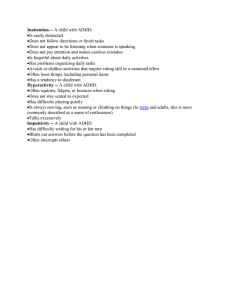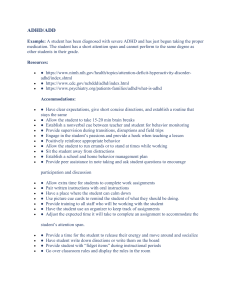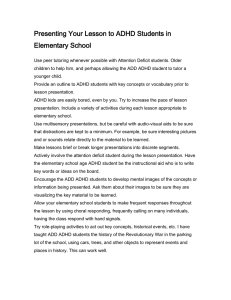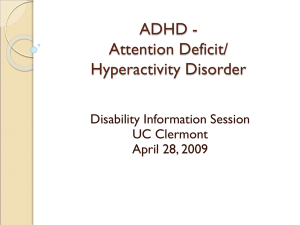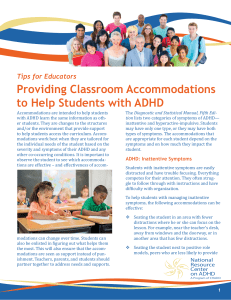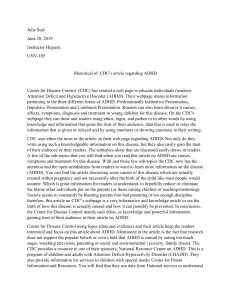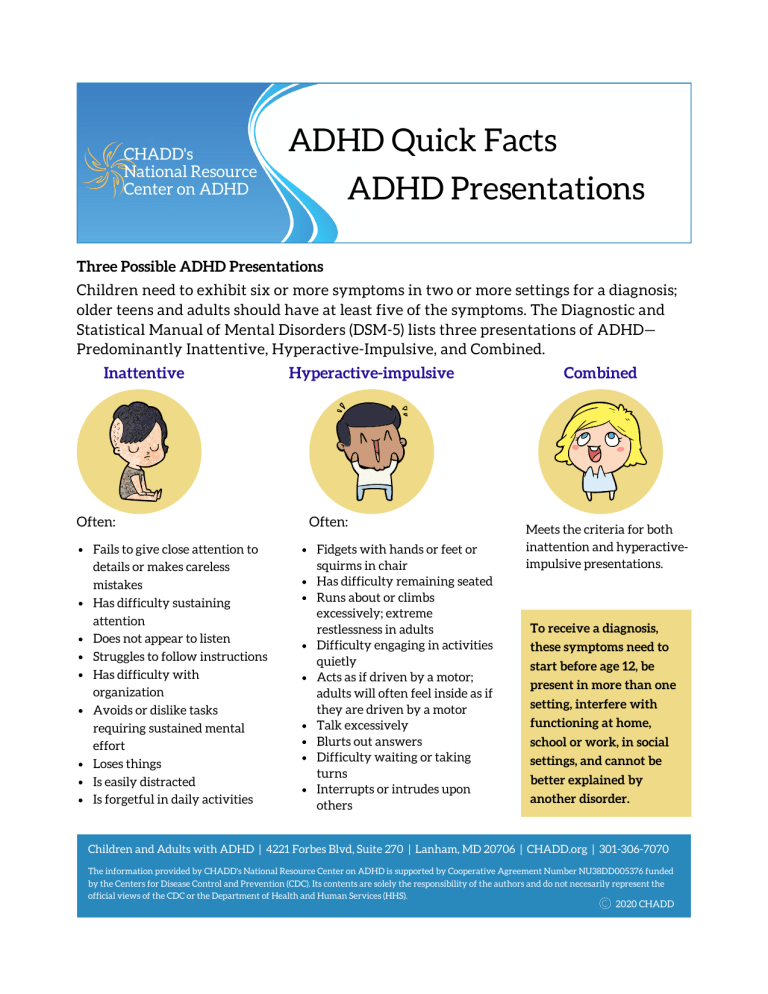
CHADD's National Resource Center on ADHD ADHD Quick Facts ADHD Presentations Three Possible ADHD Presentations Children need to exhibit six or more symptoms in two or more settings for a diagnosis; older teens and adults should have at least five of the symptoms. The Diagnostic and Statistical Manual of Mental Disorders (DSM-5) lists three presentations of ADHD— Predominantly Inattentive, Hyperactive-Impulsive, and Combined. Inattentive Often: Fails to give close attention to details or makes careless mistakes Has difficulty sustaining attention Does not appear to listen Struggles to follow instructions Has difficulty with organization Avoids or dislike tasks requiring sustained mental effort Loses things Is easily distracted Is forgetful in daily activities Hyperactive-impulsive Often: Fidgets with hands or feet or squirms in chair Has difficulty remaining seated Runs about or climbs excessively; extreme restlessness in adults Difficulty engaging in activities quietly Acts as if driven by a motor; adults will often feel inside as if they are driven by a motor Talk excessively Blurts out answers Difficulty waiting or taking turns Interrupts or intrudes upon others Combined Meets the criteria for both inattention and hyperactiveimpulsive presentations. To receive a diagnosis, these symptoms need to start before age 12, be present in more than one setting, interfere with functioning at home, school or work, in social settings, and cannot be better explained by another disorder. Children and Adults with ADHD | 4221 Forbes Blvd, Suite 270 | Lanham, MD 20706 | CHADD.org | 301-306-7070 The information provided by CHADD's National Resource Center on ADHD is supported by Cooperative Agreement Number NU38DD005376 funded by the Centers for Disease Control and Prevention (CDC). Its contents are solely the responsibility of the authors and do not necesarily represent the official views of the CDC or the Department of Health and Human Services (HHS). 2020 CHADD
